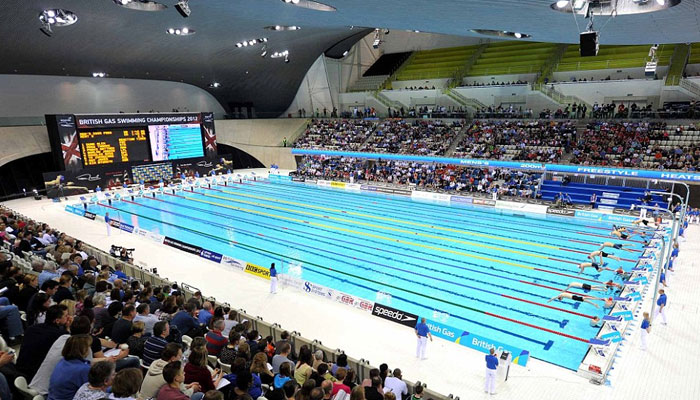London Aquatics Centre

Swimming stadiums have been around for centuries, with some of the earliest examples dating back to ancient Rome and Greece. However, the modern swimming stadium as we know it today began to emerge in the late 19th and early 20th centuries, with the development of indoor swimming pools and the rise of competitive swimming.
Design and Architecture
The design and architecture of a swimming stadium are critical to its success. The London Aquatics Centre was designed by architect Zaha Hadid and features a striking wave-shaped roof that creates a sense of movement and flow. The stadium has two 50-meter swimming pools and a diving pool, with seating for up to 17,500 spectators.
Facilities
In addition to the pools and seating areas, the London Aquatics Centre also includes a range of facilities for athletes and visitors. These include locker rooms, showers, therapy pools, and a fitness center.
Maintenance and Safety
Ensuring the safety of swimmers and visitors is a top priority for swimming stadiums like the London Aquatics Centre. Regular maintenance and upkeep are critical to ensuring that the pools and facilities are safe and in good working order.
Events
The London Aquatics Centre has played host to a variety of major events, including the 2012 Summer Olympics and the 2016 European Aquatics Championships. The stadium can also be adapted to host other types of events, such as concerts or trade shows.
Benefits of Swimming
Swimming is a popular and beneficial activity for people of all ages and abilities. It is a low-impact form of exercise that can improve cardiovascular health, build strength and endurance, and reduce stress and anxiety.
Sustainability
The London Aquatics Centre incorporates a number of sustainable features, such as rainwater harvesting systems and energy-efficient lighting, to reduce its environmental impact.
Accessibility
The stadium is also designed to be accessible to people with disabilities, with features such as ramps, elevators, and accessible seating areas.
Training and Coaching
The London Aquatics Centre serves as a training and coaching center for athletes, providing a world-class facility for professional swimmers and coaches to prepare for competitions.
Economic Impact
The stadium has had a positive economic impact on the local community, creating job opportunities and generating revenue through hosting events and attracting visitors.
Future Developments
Looking to the future, swimming stadiums like the London Aquatics Centre are exploring new technologies and trends to enhance the swimming experience. This could include virtual reality technology or biometric sensors to improve athlete performance.
Notable Swimming Stadiums
The London Aquatics Centre is just one of many notable swimming stadiums around the world. Others include the Water Cube in Beijing, the Sydney Olympic Aquatic Centre, and the Foro Italico in Rome.
Technology
Technology is increasingly being used in swimming stadiums to enhance the swimming experience for athletes and spectators alike. This could include things like underwater cameras, touchpads for timing races, or LED screens for displaying scores and other information.
Challenges
Swimming stadiums face a number of challenges, such as the cost of construction and maintenance, or the difficulty of hosting events during the COVID-19 pandemic.
Community Engagement
Swimming stadiums can also play an important role in engaging with their local communities to promote swimming and healthy lifestyles. This could include programs for kids and adults, partnerships with schools or community organizations, or outreach efforts to underserved communities.
Overall, the London Aquatics Centre is a world-class swimming stadium that represents






